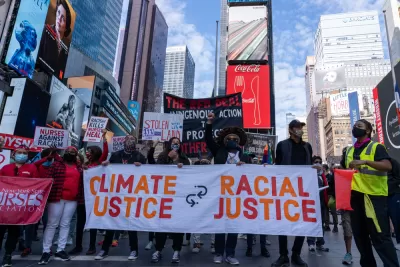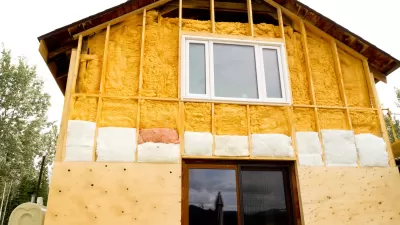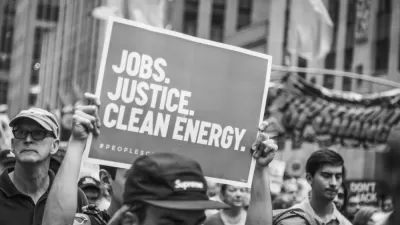A tool designed to guide federal grant distribution may not prioritize the highest-need communities, while conflicting grant guidelines create challenges for local agencies.

A screening tool employed by the federal government in classifying areas as “historically disadvantaged” is meeting with concern from environmental justice advocates who say the assessment doesn’t accurately identify “the places where residents have been hardest hit by pollution and other environmental harms.” Daniel C. Vock outlines the tool’s history and the controversy surrounding it in Route Fifty.
The tool, part of President Biden’s Justice40 initiative, is designed to direct federal grant funds to the communities that need it most. For example, “Advocates complained that the initial release failed to include Appalachian areas with abandoned coal mines, vast stretches of Alaska or places with multiple environmental and health threats.” But when the tool was updated to address those concerns, “the places that the White House added with updates were predominantly white and rural, and they do not face the types of cumulative danger found elsewhere,” according to Dana Johnson, the senior director of strategy and federal policy for WE ACT for Environmental Justice.
Vock explains that the administration opted against using race as a factor to avoid having to engage in the same protracted legal battles encountered by other federal programs. “A WE ACT analysis found that the percentage of white residents in neighborhoods identified by the White House screening tool increased by 4.5% after the revisions. The number of Hispanic residents decreased by 2.8% and Black residents decreased by 1.8%.”
The White House tool also differs from standards used by other federal agencies, which have developed their own methods for selecting grantees. “On top of that, 30 states and localities have developed similar screening tools, according to the Environmental Policy Innovation Center,” creating a headache for local agencies seeking grant funding.
FULL STORY: White House’s Environmental Justice Tool Still Comes Up Short, Advocates Say

Planetizen Federal Action Tracker
A weekly monitor of how Trump’s orders and actions are impacting planners and planning in America.

San Francisco's School District Spent $105M To Build Affordable Housing for Teachers — And That's Just the Beginning
SFUSD joins a growing list of school districts using their land holdings to address housing affordability challenges faced by their own employees.

The Tiny, Adorable $7,000 Car Turning Japan Onto EVs
The single seat Mibot charges from a regular plug as quickly as an iPad, and is about half the price of an average EV.

Seattle's Plan for Adopting Driverless Cars
Equity, safety, accessibility and affordability are front of mind as the city prepares for robotaxis and other autonomous vehicles.

As Trump Phases Out FEMA, Is It Time to Flee the Floodplains?
With less federal funding available for disaster relief efforts, the need to relocate at-risk communities is more urgent than ever.

With Protected Lanes, 460% More People Commute by Bike
For those needing more ammo, more data proving what we already knew is here.
Urban Design for Planners 1: Software Tools
This six-course series explores essential urban design concepts using open source software and equips planners with the tools they need to participate fully in the urban design process.
Planning for Universal Design
Learn the tools for implementing Universal Design in planning regulations.
Smith Gee Studio
City of Charlotte
City of Camden Redevelopment Agency
City of Astoria
Transportation Research & Education Center (TREC) at Portland State University
US High Speed Rail Association
City of Camden Redevelopment Agency
Municipality of Princeton (NJ)





























